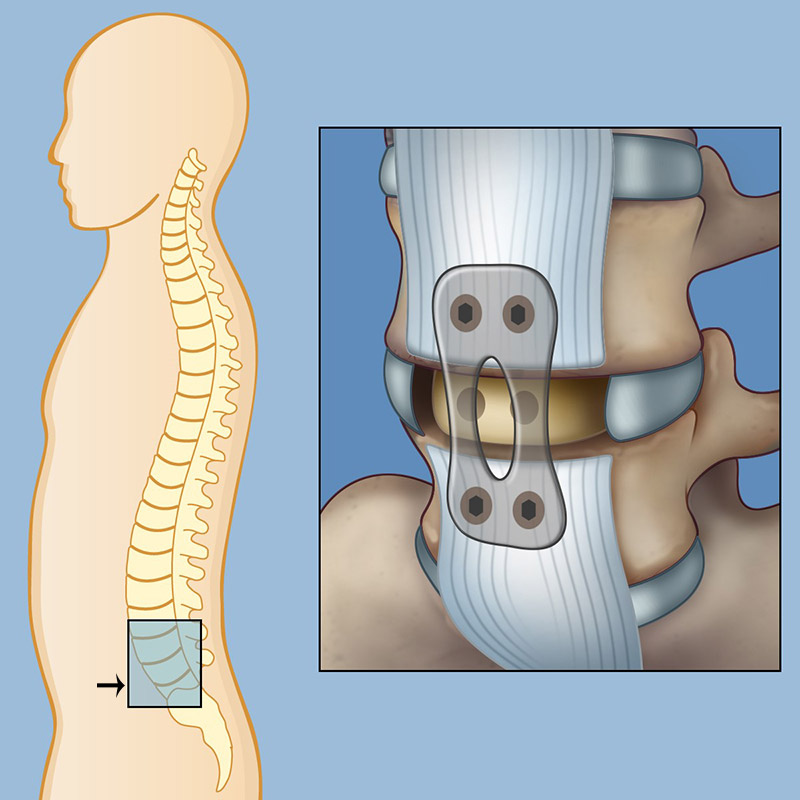
In any spinal fusion, two or more vertebrae are fixed in position and stabilized after a degenerated disc is removed so they become, essentially, a single unit. They are held in position using hardware – a “cage” and screws – that prevents them from moving independently and causing pain. Traditionally, a neurosurgeon would make an incision in the patient’s back to reach the vertebrae that need to be fused. In an anterior lumbar interbody fusion (ALIF) procedure, the neurosurgeon makes the incision on the front (anterior) side of the patient.
The anterior approach allows a neurosurgeon to insert a larger cage than possible with the traditional posterior (back) approach. The larger cage creates a better curvature to the lower (lumbar) spine, where it is needed for stability and posture. Our spinal surgery experts work alongside specially trained vascular surgeons during the ALIF procedure to safely navigate around the blood vessels in front of the spine.
In some severe cases, the neurosurgeon uses a posterior approach in addition to the anterior fusion to provide the most optimal stability.
Not everyone is a good candidate for ALIF. Neurosurgeons identify which patients are candidates for ALIF as opposed to a traditional posterior approach based on a careful physical exam and detailed review of imaging tests.
Find out more about Spine Surgery
Reviewed by: Ibrahim Hussain, MD
Last reviewed/last updated: September 2022
Illustration by Thom Graves, CMI